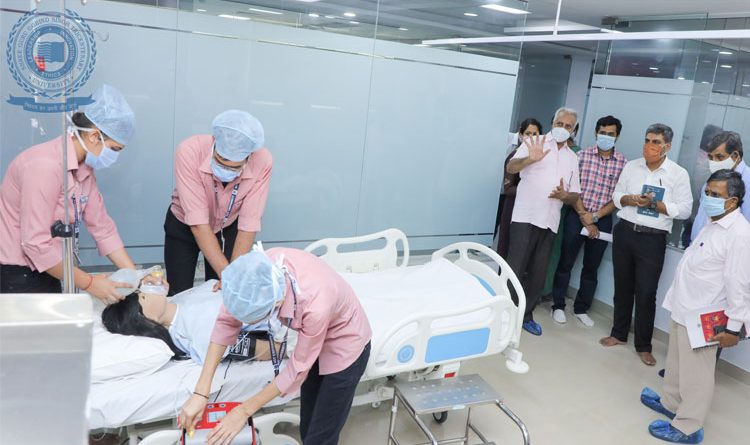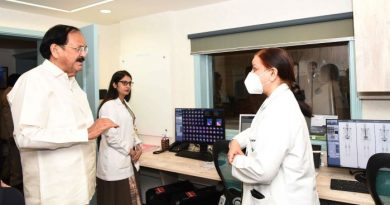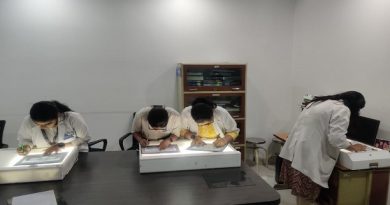SGT University’s Asia’s first National Reference Simulation Centre is training destination for nursing faculty across India
SGT Times Reporter
Think of an untrained student of nursing and medicine getting his or her practical training on one of your near and dear ones who is admitted to a hospital!
This was a reality till some years ago when future doctors and nurses would go straight to hospitals for their practical training to experiment on the patients.
However, times have changed since and now, simulators have been developed for this purpose.
SGT University, Gurugram, has Asia’s first National Reference Simulation Centre where nursing faculty from across the country are coming for training.
“This simulation lab was acquired in 2018 in collaboration with the Nursing Council of India (INC). For this, the University entered into a tetrapartite agreement with INC, Jhpiego, a non-profit organization for international health affiliated with Johns Hopkins University and Laerdal, a Norway based company that develops products and programmes for healthcare providers,” says Anu Grover, Officiating Director of Simulation lab.
A visit to the Simulation Centre developed on the 4th floor of the SGT Medical Institute and Research Centre (Block-C of the SGT University) gives one the feel of an ultra-modern healthcare centre with operational Critical Care Unit, Trauma and Emergency Unit, Paediatric Ward, Gynaecology and Obstetrics Ward and so on.
Although the patients laying on the beds are just life-size mannequins, yet they seem to be responding to the doctors and nurses and even replying to their questions.
This is another matter that they are remote operated from another room by trained professionals.
However, students of medicine and nursing can learn measuring blood pressure, injecting drugs and managing trauma emergencies on these mannequins.
In the Gynaecology and Obstetrics Ward, students learn the process of assisting deliveries, as a “pregnant” mannequin deliver a new born just like a human being.
These mannequins are of high fidelity and hence react quite near to the human beings.
“Simulation is a methodology and used for cases where it is prohibitively expensive or simply too dangerous to allow trainees to use the real equipment in the real world. In such situations they will spend time learning valuable lessons in a safe virtual environment yet living a lifelike experience. Often the convenience is to permit mistakes during training for a safety-critical system. Initially, simulation was used in airlines, but gradually, its use in the medical and nursing field has increased. Now, the Nursing Council of India has made it mandatory,” tells Anu Grover.
She explains that a student of medicine and nursing is first expected to acquire knowledge through books, lectures, audio visual media and blended learning approaches, then acquire skill proficiency by developing psychomotor skills through repetitive practice using task trainer or standardised patient, develop problem solving skills by using problem based learning and case studies to develop critical thinking, simulation in teams by where groups are allowed to practice realistic scenario in safe environment to prepare for better team performance and finally, the clinical experience by learning through reflecting on the treatment of real patients, mentoring and exchange of knowledge.



